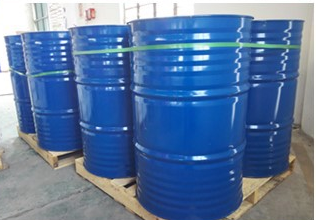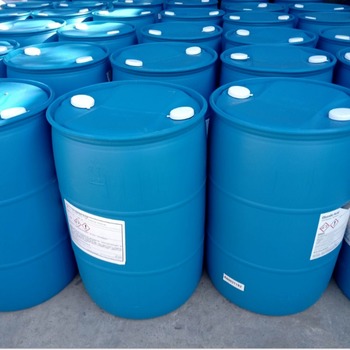Ethylene glycol antifreeze
Ethylene glycol is a colorless and slightly viscous liquid with a boiling point of 197.4°C and a freezing point of -11.5°C. It can be mixed with water in any proportion. After mixing, the freezing point is significantly lowered due to the change in vapor pressure of the cooling water. The degree of decrease decreases with the increase of ethylene glycol content within a certain range. When the ethylene glycol content is 68%, the freezing point can be reduced to – 68°C. When this limit is exceeded, the freezing point will rise instead. Ethylene glycol antifreeze easily generates acidic substances during use, which has a corrosive effect on metals. Therefore, an appropriate amount of disodium hydrogen phosphate should be added to prevent corrosion. Ethylene glycol is toxic, but due to its high boiling point, it does not produce vapor that can be inhaled into the body and cause poisoning. Ethylene glycol has strong water absorption, and the storage container should be sealed to prevent it from overflowing after absorbing water. Since the boiling point of water is lower than that of ethylene glycol, water is evaporated during use. When there is a lack of coolant, just add clean water.

This antifreeze can be recycled after use (to prevent mixing with petroleum products) , after sedimentation, filtration, adding water to adjust the concentration, and adding preservatives, it can continue to be used, generally for 3-5 years. But filter it multiple times to prevent damage to your car. Ethylene glycol is a colorless, slightly viscous liquid with a boiling point of 197.4°C and a freezing point of -11.5°C. It can be mixed with water in any proportion. Many people think that the freezing point of ethylene glycol is very low, and that the freezing point of antifreeze is a neutralized freezing point after mixing ethylene glycol and water in different proportions. In fact, this is not the case. The freezing point will be lower due to the change in the vapor pressure of the cooling water after mixing. significantly reduced. The degree of decrease decreases with the increase of ethylene glycol content within a certain range, but once it exceeds a certain proportion, the freezing point will increase instead. When the ethylene glycol content is 68%, the freezing point can be reduced to -68°C. When this limit is exceeded, the freezing point will rise instead. Antifreeze liquid mixed with 40% ethylene glycol and 60% soft water has an antifreeze temperature of -25°C; when antifreeze contains 50% ethylene glycol and 50% water, the antifreeze temperature is -35°C .
Diethylene glycol antifreeze
Diethylene glycol—Water antifreeze is not easy to volatilize and catch fire, and is less corrosive to metals. However, diethylene glycol has a lower freezing point lowering effect than ethylene glycol. When preparing antifreeze with the same freezing point, it is less effective than ethylene glycol. The amount of glycol used is large, and the heat conduction efficiency decreases. In order to reduce costs, many manufacturers mix ethylene glycol and diethylene glycol. Glycerin-water antifreeze Glycerin-water antifreeze is not suitable for volatilization and ignition, and is less corrosive to metals. However, glycerol has a low efficiency in lowering the freezing point. When preparing antifreeze with the same freezing point, a larger amount is used than ethylene glycol and alcohol. Therefore, this antifreeze is used less frequently.

Alcohol—water antifreeze
The boiling point of alcohol is78.3℃, freezing point is -114℃. Liquor and water can be mixed in any proportion to form antifreeze with different freezing points. The more alcohol there is, the lower the freezing point is. Alcohol is flammable. When the alcohol content in antifreeze reaches more than 40%, it is easy to produce alcohol vapor and catch fire. Therefore, the alcohol content in antifreeze should not exceed 40%, and the freezing point is limited to about -30°C. Alcohol-water antifreeze has the advantages of good fluidity, fast heat dissipation, convenient materials, and simple preparation. Its disadvantages are that it catches fire easily, the boiling point of alcohol is low, and the evaporation loss is large. After the alcohol evaporates, the composition of the antifreeze changes and the freezing point rises. Cars driving in mountainous and plateau areas should not use alcohol-water antifreeze because the evaporation loss of alcohol is high. When driving in general areas, alcohol content should be checked regularly and replenished in time.

 微信扫一扫打赏
微信扫一扫打赏

